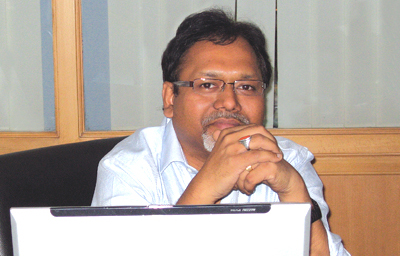INDIAN ARMED FORCES CHIEFS ON OUR RELENTLESS AND FOCUSED PUBLISHING EFFORTS

The insightful articles, inspiring narrations and analytical perspectives presented by the Editorial Team, establish an alluring connect with the reader. My compliments and best wishes to SP Guide Publications.

"Over the past 60 years, the growth of SP Guide Publications has mirrored the rising stature of Indian Navy. Its well-researched and informative magazines on Defence and Aerospace sector have served to shape an educated opinion of our military personnel, policy makers and the public alike. I wish SP's Publication team continued success, fair winds and following seas in all future endeavour!"

Since, its inception in 1964, SP Guide Publications has consistently demonstrated commitment to high-quality journalism in the aerospace and defence sectors, earning a well-deserved reputation as Asia's largest media house in this domain. I wish SP Guide Publications continued success in its pursuit of excellence.
A Word from Editor

Two key appointments—one a triumphant return, the other a promise of fresh initiatives—grabbed the headlines. Our best wishes to Defence Minister A.K. Antony and Air Chief Marshal P.V. Naik.
Continuity—the buzzword at the Centre—gave way to time-honoured custom for the Indian Air Force (IAF) when on May 31 Vayu Bhawan in Delhi witnessed the smooth transition of power with Chief of the Air Staff (CAS) Air Chief Marshal F.H. Major handing over the baton to his successor and Vice Chief of Air Staff, Air Marshal P.V. Naik. The momentous occasion came close on the heels of yet another commemorative event: induction of the first of three Airborne Warning and Control System into the IAF on May 28. A vigilant eye and ear in the sky, the system’s stint with the IAF is sure to feature extensively in our forthcoming issues. For now, we pipped competition to bring you the forthright views of the new CAS, Air Chief Marshal Naik, who spoke exclusively to SP’s Aviation barely days before taking over at the IAF helm. The IAF’s plan to rejuvenate depleted combat squadrons has been adversely affected due to delay in procurement programmes, he rued. The procurement process has, unfortunately, not been able to keep pace with phasing out of aircraft.
Few would dispute his argument. Nevertheless, hopes are now riding high on the UPA’s return to power. The astounding comeback has received resounding welcome from every quarter, fuelling aspirations of the Manmohan Singhled political dispensation blowing away every roadblock and bureaucratic resistance to acquisition programmes of the armed forces. InFocus and Forum deliberate on the possible advantages of the continuity factor.
Elsewhere, too, urgency and a palpable sense of therapeutic optimism appeared to be the dominant sentiments. Reporting in from the annual European Business Aviation Conference and Exhibition in Geneva, Alan Peaford lays bare the unassailable confidence infusing the industry of flying through these tough times without suffering any irreparable damage—assuming the economy bounces back next year and sales recover in 2012. Under the circumstances, should business jet owners rush for the nearest exit and divest themselves of their wings while they can? That is just one of the several key concerns plaguing the sector that’s grappling tenaciously with the economic implications of business jet ownership.
Moving to the defence sector, a relentless drive has been the development of jet engines. Today, practically all the frontline fighters of the world use turbofan jet engines. For tomorrow, one concept fast gaining momentum is that of Hypersonic flight. For the latest in this enterprise, and lots more besides, turn to the pages inside.





